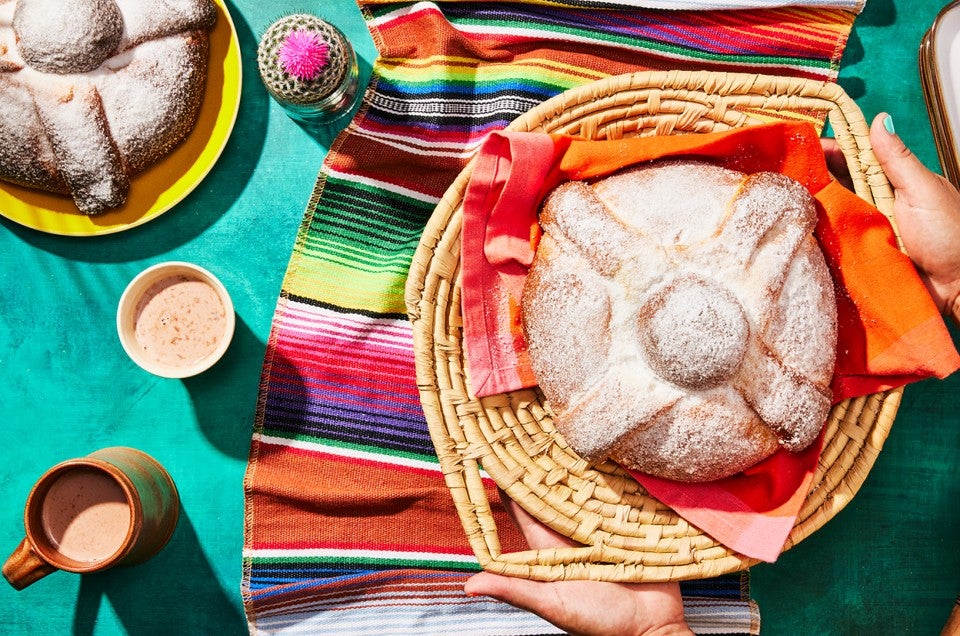Pan de Muerto is a celebratory bread for Day of the Dead
Pati Jinich's recipe for this classic pan dulce is soft, sweet, and infused with tradition.


 Puffy and fluffy. That’s how Pati Jinich (of PBS' Pati’s Mexican Table) describes her Pan de Muerto, the traditional Mexican pan dulce commonly made as an offering during Day of the Dead (Día de los Muertos) taking place November 1-2. “Every year, it is a ritual in our home,” Pati says. “The long process, combined with the beautifully perfumed dough, infuses my kitchen with warmth and a bit of magic.”
Puffy and fluffy. That’s how Pati Jinich (of PBS' Pati’s Mexican Table) describes her Pan de Muerto, the traditional Mexican pan dulce commonly made as an offering during Day of the Dead (Día de los Muertos) taking place November 1-2. “Every year, it is a ritual in our home,” Pati says. “The long process, combined with the beautifully perfumed dough, infuses my kitchen with warmth and a bit of magic.”

Pan de Muerto is distinguished by more than just its pillowy soft texture. It’s also shaped in distinct ways, often to mimic bones — a reflection of the festival and this bread’s deeper symbolism. As Adriana Velez writes for the Washington Post, “The crossed bones reference the four directions of the Aztec calendar meeting together at the heart of the world, called the quincunx; that’s the knob.” In addition to being eaten by loved ones together, Day of the Dead bread also frequently serves as an altar decoration to both honor and celebrate those who’ve passed away.
Pati describes her Pan de Muerto recipe as a “brioche-style bread” scented with orange and anise (her favorite way to flavor it!), then brushed with melted butter and gilded with a sparkling sugary crust. Steeped in tradition, it’s the main part of her family’s Día de los Muertos celebration, and after they bake it, they eat it with every meal until it’s all gone.

For Pati, this pan dulce goes beyond a buttery, sweet treat. “It is a strong connection to my home country, our traditions, our family. It also helps me stay doubly rooted: On the one hand, it helps us stay connected with the generations of my family that have been making and eating this bread for so long, and at the same time it helps us grow roots here as we share our traditions with others.”
Cover photo by Rick Holbrook.

